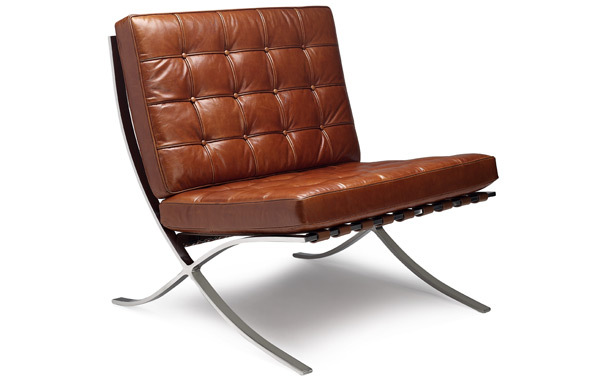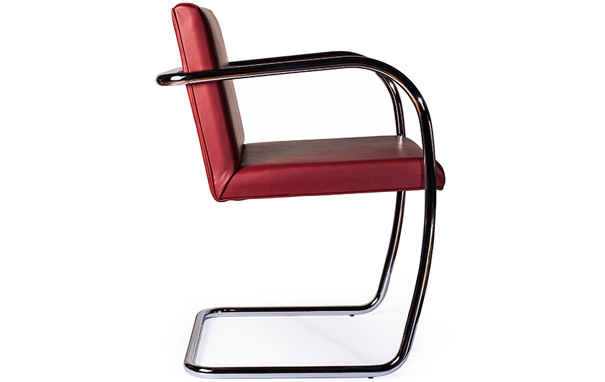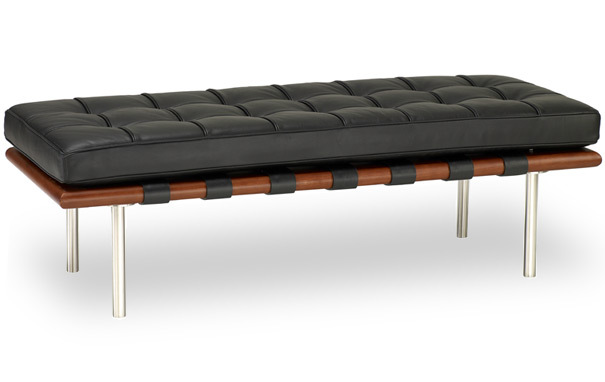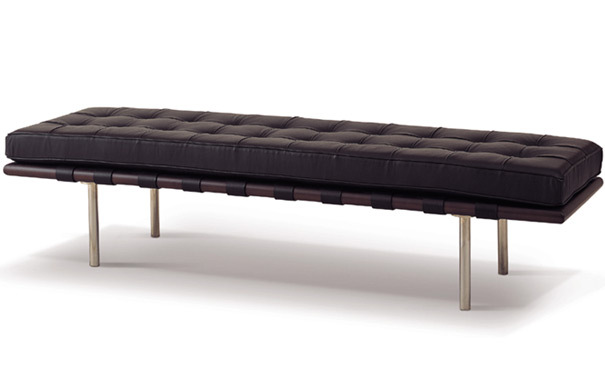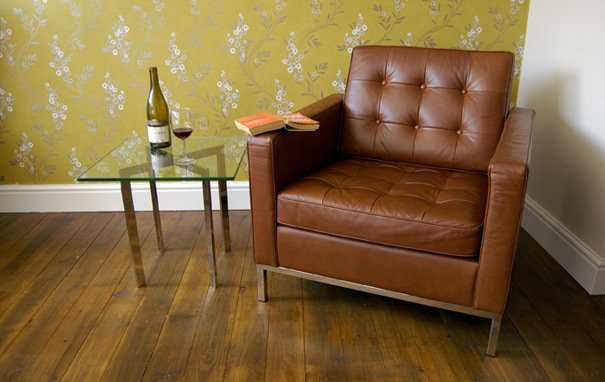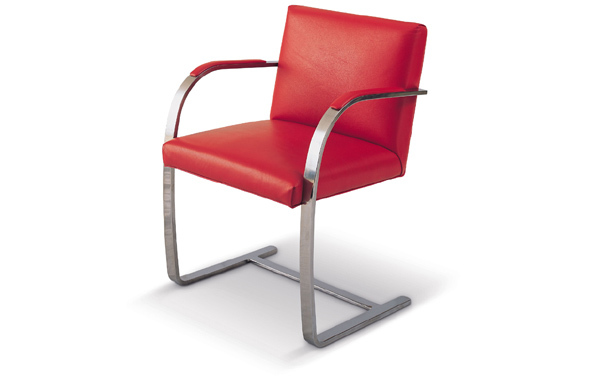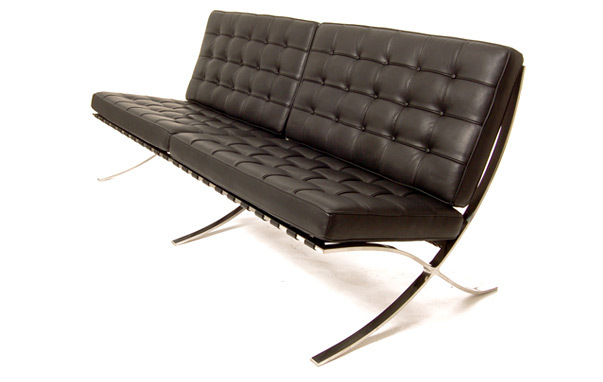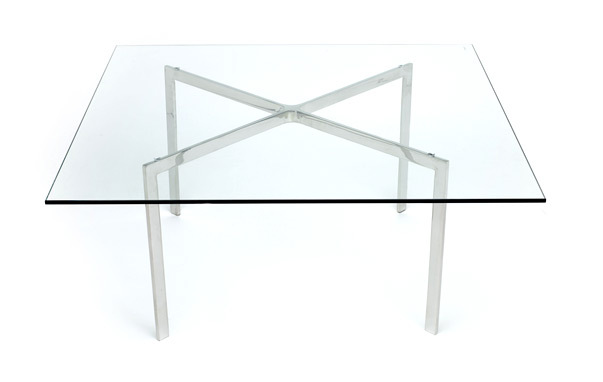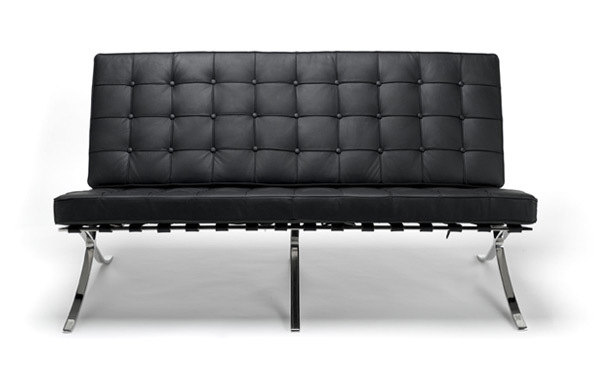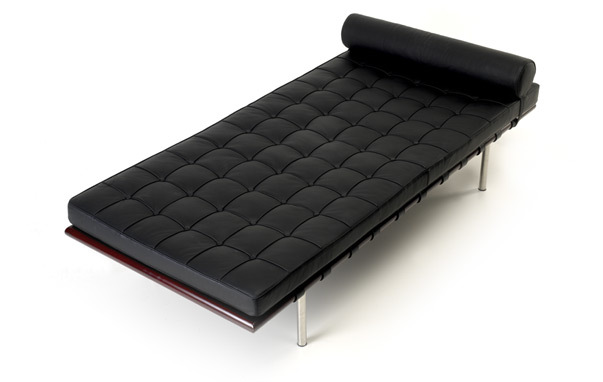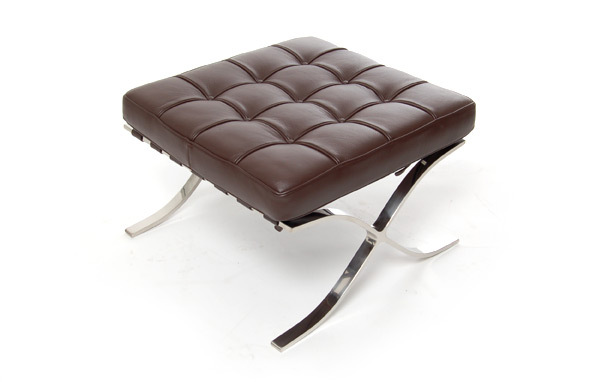Ludwig Mies van der Rohe
27th March 1886 – 17th August 1969
When it comes to the big names of twentieth century design, they don’t come much bigger (or longer) than Ludwig Mies van der Rohe. A pioneering and hugely influential architect, a dedicated and passionate educator, coiner of several catchy aphorisms, and – luckily for us – a dab-hand at designing furniture.
Mies was, first and foremost, an architect. Even before taking on the influential role of Director of Architecture at the Bauhaus Design School, he had already been architectural director of the Werkbund, and had helped to found the architectural association Der Ring.
All of which is to say that Mies was never one of those “not fully appreciated in his lifetime” types.
No, Mies was big news from very early in his career, first driving modernist architecture forward in Europe during the early part of the twentieth century, and later (after emigrating to America in 1937) giving Frank Lloyd Wright a run for his money as “America’s Greatest Living Architect.”
Mies was also one of the most intellectual of all modernist architects, and spent much of his life pursuing a rational approach to design, his goal being a system that others could use to create buildings as powerful and beautiful as those Mies himself designed. Typically modest, when his students failed to achieve such impossibly high standards, Mies blamed flaws in his teaching method.
Much to our relief, Mies managed to encapsulate his philosophical pursuits in pithy aphorisms, such as “God is in the details”, and “Less is more”, and clean, innately appealing designs.
His most famous furniture designs – the Barcelona Chair, and the Brno Chair – reflect the same philosophical underpinnings that drove his architecture. Both are concerned with the use of space, their forms being defined as much by the space around them as by the structure of the chairs themselves, and both employ a striking combination of sleek modernist steel and luxurious leather.
Mies’s overarching ambition was to establish a style of design that would represent modern times, much as Classical and Gothic did for their own eras. In many ways he achieved this ambition, but we like to think that he also transcended it, creating designs that appear far more timeless than timely.
Related Articles
- My pilgrimage to Mies Van Der Rohe's German Pavilion in November 2019
- The main Barcelona chair product page
- What our customers are saying
- Barcelona Chair Options
- Barcelona Chair Buyers Guide
- Bamberg Barcelona Chair Happiness from Budapest
- 7 reasons not to buy the cheapest Barcelona chair
- A pre Knoll Barcelona chair challenge
- Buying a Barcelona chair is a minefield for customers
- Our Barcelona chair as good as the original - it’s official!
- Vintage Brown Barcelona chair
- Vintage Barcelona chair
- Barcelona chair customer happiness

